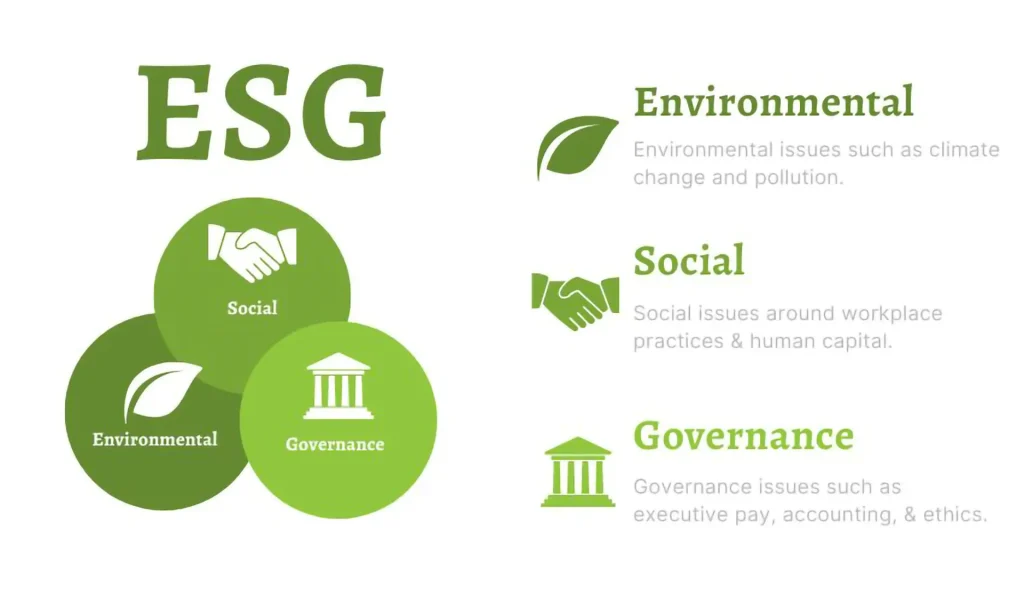The evolving landscape, influenced by polarised political views and shifting weather patterns, reshapes purchasing decisions. This change in consumer values and behaviour marks the beginning of a new era where customer experience intertwines seamlessly with ESG principles, emphasising shared values for positive societal and environmental impacts.
The Changing Landscape
In this dynamic environment, businesses are redefining customer relationships beyond mere transactions. The focus is on sustainability, shared values, and positive impact. This shift emphasises collaboration between businesses and customers to foster a better future.
The integral role of customer satisfaction is familiar to businesses, and increasingly, more are realising that ESG is not just a metric but a strategic puzzle piece for success. Loyal customers drive repeat purchases and contribute to positive word-of-mouth marketing, significantly impacting a brand’s reputation and credibility.

ESG Driving Customer Preference and Loyalty
ESG principles play a pivotal role in influencing customer preferences. Studies by McKinsey and NielsenIQ on United States’ markets between 2017 and 2022 indicate that customers are willing to pay more for environmentally friendly products. Products with ESG-related claims have demonstrated significant growth, showcasing the impact of ethical considerations on consumer choices.
The integration of ESG principles positively influences customer loyalty. These studies have suggested that companies genuinely committed to ESG values are more likely than their non-ESG-compliant counterparts to attract and retain a loyal customer base. This commitment goes beyond a competitive advantage; it has become an expectation as customers seek authenticity and action from businesses.

Integrating ESG into Business Operations
ESG involves environmental, social, and governance considerations. Companies need to embed these principles into their core business strategies to adapt to changing customer expectations. A research done by The Institute of Customer Service emphasises the growing influence of an organisation’s ESG agenda on consumer decisions.
Adopting ESG considerations requires a systematic approach:
- Identify Relevant ESG Issues: Prioritise issues aligning with core values and significant environmental and social impacts.
- Create a Defined ESG Policy: Communicate clearly outlined commitment, goals, and actions endorsed by top management.
- Establish Clear Targets: Set measurable targets aligned with the long-term vision, regularly tracking and reporting progress.
- Incorporate ESG into Decision-Making: Integrate ESG into all decision-making processes, from product development to resource allocation.
- Involve Stakeholders: Engage customers, employees, suppliers, and communities to foster shared responsibility.
- Maintain Strong Governance: Ensure transparent, accountable, and fair governance, promoting diversity and inclusion.

Overcoming Challenges Of ESG Integration with a Future-Focused Approach
While integrating ESG principles into customer experience can create valuable opportunities for an organisation, it comes with complications. To overcome challenges and align with ESG principles, companies can take a future-focused approach:
- Focus on Long-Term Benefits: Emphasise how ESG integration can boost customer loyalty, brand reputation, and cost savings.
- Build Strong Partnerships: Collaborate with suppliers to maintain sustainability standards throughout the supply chain.
- Stay Attuned to Customer Preferences: Listen to customers, transparently communicate sustainability efforts, and value customer feedback.
- Leverage Technology: Use technology, data analytics, and automation to enhance customer experiences and sustainability strategies.
- Embrace Emerging Trends: Innovate by adopting trends like circular economy practices and inclusive design to demonstrate leadership in sustainability.
- Monitor Regulatory Landscape: Stay informed about evolving ESG regulations, aligning strategies with societal demands and best industry practices.
- Implement Innovative Approaches: Engage customers through personalised experiences and immersive technologies, fostering sustainable behaviours.

Integrating ESG principles into customer satisfaction strategies is now a necessity for any organisation’s long-term success. By aligning with customer values and proactively embrace ESG principles, organisations position themselves for sustained profitability, growth, and positive societal impact.






